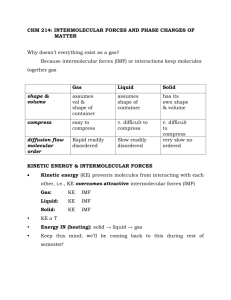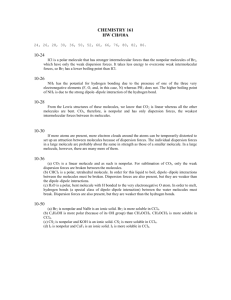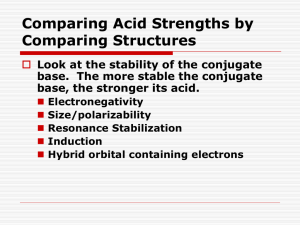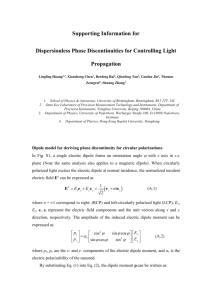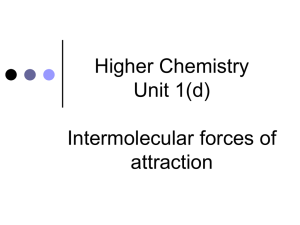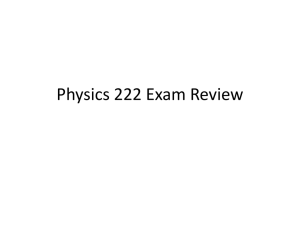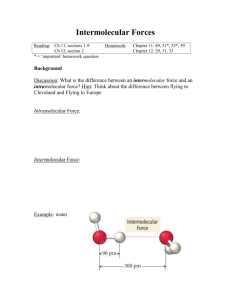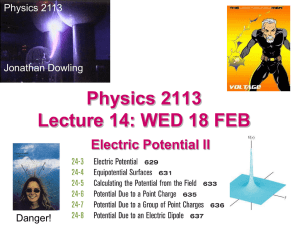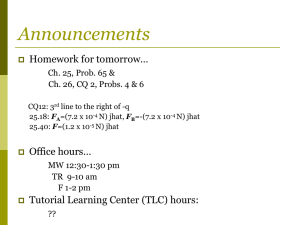Week 1
advertisement
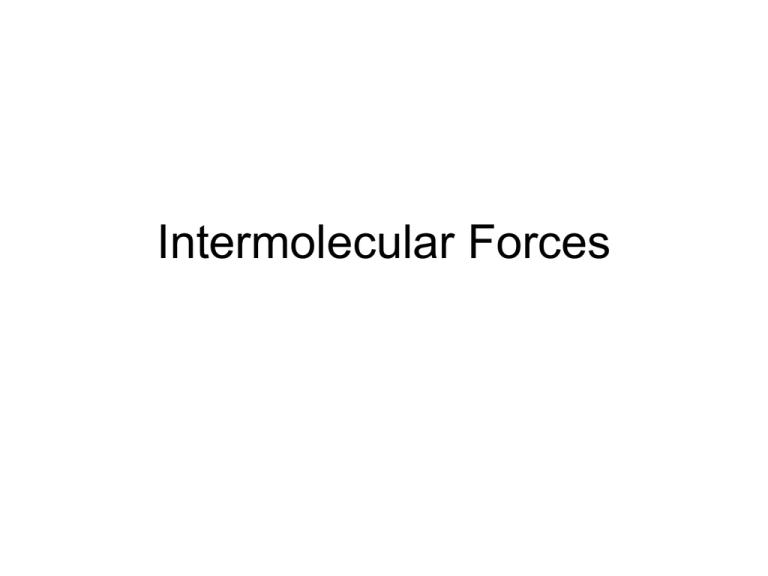
Intermolecular Forces Solids, Liquids, and Gases 2 3 Intermolecular Attractions 4 Intermolecular Vs Intramolecular forces • Intermolecular forces are much weaker than intramolecular forces. • Example: • We need about 41kJ to vaporize 1 mole of water at its boiling point (to overcome intermolecular forces), but about 930 kJ are needed to break the two O-H bonds. 5 Ion – Dipole interaction 6 7 Dipole – Dipole Interaction 8 9 London Dispersion Forces (instantaneous dipoles) 10 Polarizability: the ease with which the electron distribution around an atom or molecule can be distorted. Dispersion forces increases with: 1. polarizability 2. atomic or molecular mass 3. number of electrons 11 Van der Waals Forces • • • • 12 Dipole – dipole forces Dipole – induced dipole forces Dispersion forces (London forces) But not ion-dipole forces or hydrogen bonding 13 Example: Correlate intermolecular forces to mp Compound CH4 CF4 CCl4 CBr4 CI4 14 Melting point, oC -182.5 -150.0 -23.0 90.0 171.0 Which is greater: dipole dipole or dispersion forces? • CH3F has a dipole moment of 1.8 Debye, while CCl4 has no dipole moment. The boiling point of the two compounds are 78.4 and 76.5 oC. Although CH3F has both dipole – dipole forces and dispersion forces, it has a much lower BP (smaller intramolecular forces) than CCl4 which has dispersion forces only. However this is not always true. 15 16 17 Example: What types of intermolecular forces exists between the following pairs: • • • • • • 18 a. HBr and H2S Cl2 and CBr4 I2 and NO3NH3 and C6H6 CH3Cl and CCl4 KBr and H2O Polarity of molecules Intermolecular forces Polar - polar Dipole – dipole (+Dispersion) Polar - nonpolar Dipole – induced dipole (+Dispersion) Ion – dipole (+Dispersion) Polar + ion Nonpolar + nonpolar Ion – induced dipole (+Dispersion) Dispersion Ionic compounds Ionic bonds (Strongest) Nonpolar + ion 19 Hydrogen Bonding 20 A hydrogen bond can form when: • We have molecules containing one of the following groups: • N-H • O-H • H-F • And O, N, or F atoms in the same molecule or other molecules 21 22 23 24 Density of water 25 26 • Highest density occurs at 4oC. • From 0 – 4oC, trapping prevails which results in an increase in density • Above 4oC, thermal expansion predominates resulting in a decrease in density 27 28 29 30 31 32 33
